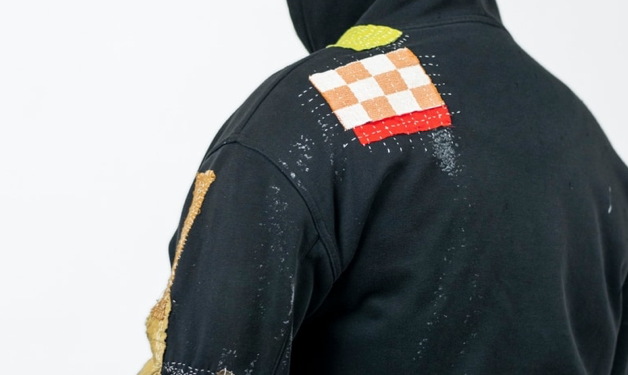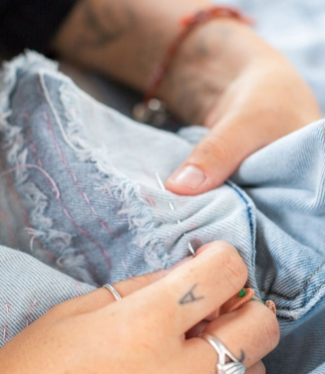A multisensory coffee for the tea ceremony
Taking over the ground and first floors of a modern low-rise in Osaka, Tokyo-based studio I IN has created a coffee shop that is futuristic,…
Dutch designers Alicia Minaard and Dave Hakkenshave launched the Fixing Fashion movement, which is the latest project of the One Army for the Planet foundation, the organization that mobilizes international communities to tackle major environmental issues.
Designers define Fixing Fashion as “a fashion collection that is not for sale”. Indeed, the platform presents the latest creations of the founders and their community, without showing any price. The goal of the project is to teach the general public to create their own clothes from recycled fabrics and various materials. “We put forward mending and enhancement techniques to apply to the clothes you already wear,” explains Alicia Minaard.

The tutorials are free and available on Fixing Fashion’s website. With these videos, the project leaders hope to make as many people as possible aware of the concept of sustainable fashion, by encouraging them to change their consumption habits. The demonstration videos shot by the young duo are accompanied by detailed explanations of the various sewing techniques.

The techniques fall into five categories: remake, repair, resize, recolor and decorate. They allow, among other things, to turn a t-shirt into a dress and to sew two different shirts together to create a new one. “In the early stage, what we need most of all is people who inspire others and wear their fixed clothes with pride. Then we start to build our community, provide more techniques, ideas, examples and so on,” Hakkens explains.
Fixing Fashion was launched in April 2021, during the coronavirus crisis. “Now we are observing how the community takes it up and reacts” continues the designer. The project was created in response to fast fashion, which brings together major e-commerce brands offering, according to the designer, “poor quality clothes at very low prices, which flood consumers’ closets and finally end up in tatters on the beaches of Africa.”Via their Instagram page fixing fashion community, the founders regularly publish photos of their creations with the link to explanatory videos. By sharing their knowledge on clothing repair, the designers hope to bring together a large, supportive community around sustainable fashion, with their platform as a primary rallying point.